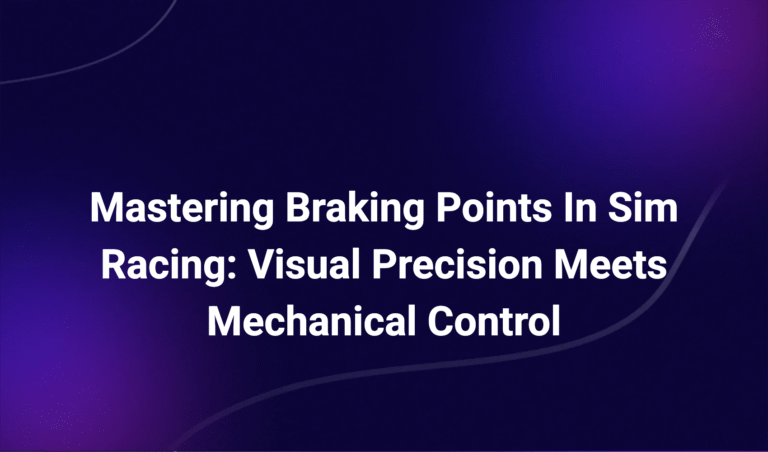What is FOV (Field of View)? The Complete Guide
Field of View (FOV) is a fundamental concept that impacts everything from gaming performance to photography composition and VR immersion. This comprehensive guide explains what FOV is, how it’s measured, and why it matters across different applications.
What is Field of View?
Field of View (FOV) refers to the observable area that can be seen at any given moment. In the context of human vision, displays, cameras, or virtual environments, FOV defines the extent of the observable world visible at any point in time.
Think of FOV as answering the question: “How much of the world can I see without moving my eyes or head?”
FOV in Human Vision
The human visual system has an impressive field of view:
- Horizontal FOV: Approximately 210 degrees
- Vertical FOV: About 150 degrees
- Binocular FOV (where both eyes overlap): Roughly 114 degrees
This wide field of view gives us excellent peripheral vision for detecting motion and potential threats, while our central vision provides high detail for focused tasks.
Digital FOV vs. Human FOV
Digital displays and cameras have inherently limited fields of view compared to human vision. This fundamental difference creates an interesting challenge: how to represent a realistic view within the constraints of a screen or lens.
How FOV is Measured
FOV is typically measured in degrees, indicating the angular extent of visible space. There are three primary ways to measure FOV:
1. Horizontal FOV (HFOV)
Horizontal FOV measures the angle from the leftmost to rightmost visible points. This is the most commonly referenced FOV measurement in gaming and is particularly important for:
- Competitive gameplay where peripheral awareness matters
- Racing games where side visibility impacts driving performance
- First-person shooters where spotting enemies from the corner of your screen provides an advantage
2. Vertical FOV (VFOV)
Vertical FOV measures the angle from the topmost to bottommost visible points. Vertical FOV becomes particularly important in:
- Games with significant vertical gameplay elements (like parkour or climbing)
- Flying simulations where seeing above and below is crucial
- Photography when capturing tall subjects like buildings or mountains
3. Diagonal FOV
Diagonal FOV measures the angle between opposite corners of the viewable area. This measurement is common in:
- Camera and lens specifications
- VR headset technical details
- TV and monitor marketing materials
The Science Behind FOV Perception
Several factors influence how we perceive field of view:
Viewing Distance
The distance between your eyes and a display significantly impacts perceived FOV. As viewing distance increases:
- Perceived FOV decreases
- Image details become smaller
- Overall immersion decreases
This is why many simulator enthusiasts position their monitors as close as practically comfortable.
Aspect Ratio
The ratio between width and height of a display affects the distribution of FOV:
- 16:9 (Standard Widescreen): Balanced FOV distribution
- 21:9 (Ultrawide): Expanded horizontal FOV at the same vertical FOV
- 4:3 (Traditional): More vertical information at the expense of horizontal FOV
Display Size
Larger displays occupy more of your visual field when viewed from the same distance:
- A 27″ monitor at 24″ viewing distance provides a more immersive FOV than a 24″ monitor
- A 49″ super ultrawide monitor can fill much of your peripheral vision
FOV in Different Applications
Gaming
In video games, FOV significantly impacts both performance and experience:
Competitive Advantage
Higher FOV settings allow players to see more of their surroundings without moving the camera, providing a tactical advantage in competitive games. Most professional FPS players use FOV settings between 90-110 degrees.
Motion Sickness
FOV settings that don’t match our brain’s expected visual input can cause motion sickness. Players who experience in-game nausea often benefit from:
- Increased FOV settings in first-person games (typically 90+ degrees)
- Reduced camera movement effects
- Stable frame rates
Visual Distortion
Very high FOV settings can create a “fisheye” effect where objects in the center appear smaller and distant while edges appear stretched. This distortion represents the compromise between seeing more and maintaining visual accuracy.
Photography
In photography, FOV is primarily determined by:
Focal Length
- Wide-angle lenses (below 35mm): Broader FOV, ideal for landscapes and architecture
- Standard lenses (35-70mm): Similar to human vision, good for street photography
- Telephoto lenses (above 70mm): Narrow FOV, excellent for portraits and wildlife
Sensor Size
Different camera sensor sizes impact FOV with the same lens:
- Full-frame sensors capture the complete FOV of the lens
- Crop sensors (APS-C, Micro Four Thirds) capture a smaller portion, effectively “zooming in”
Virtual Reality
In VR, FOV directly impacts immersion:
Presence
Higher FOV values in VR headsets create a stronger sense of “being there” by filling more of your vision with the virtual world.
Technical Limitations
Current consumer VR headsets typically offer:
- Horizontal FOV: 90-110 degrees
- Vertical FOV: 80-100 degrees
These values fall short of human vision capabilities, creating a “scuba mask” or “binocular” effect that reminds users they’re in a virtual environment.
Security and Surveillance
In security applications, understanding FOV ensures proper coverage:
Camera Placement
Calculating the precise FOV of security cameras helps eliminate blind spots and ensure complete coverage of critical areas.
Lens Selection
Security system designers select specific lens FOVs based on:
- The size of the area being monitored
- Required detail level (facial recognition vs. general movement)
- Distance from the camera to subjects of interest
How to Calculate FOV
FOV depends on multiple factors that vary by application:
For Displays (Gaming, Productivity)
- Screen size (diagonal measurement)
- Aspect ratio
- Viewing distance
For Cameras and Photography
- Lens focal length
- Sensor size
- Aspect ratio
For VR/AR Headsets
- Lens properties
- Display panel size
- Distance from eyes to lenses
Our FOV Calculator tool helps you determine precise FOV values by entering these parameters.
Optimizing FOV for Different Use Cases
Gaming Optimization
First-Person Shooters
- Competitive players typically use 90-110° horizontal FOV
- Higher FOV values improve awareness but may reduce aiming precision
- Some games like Valorant and CS2 have fixed vertical FOV but variable horizontal FOV based on aspect ratio
Racing Games
- Recommended FOV is typically narrower (60-90°) to maintain speed perception
- Simulator enthusiasts often calculate exact FOV based on their physical setup
- Multiple monitors benefit from careful FOV calibration across displays
Third-Person Games
- FOV settings affect camera distance and peripheral visibility
- Lower values create a more cinematic experience
- Higher values provide better situational awareness
Photography Optimization
Landscape Photography
- Wide-angle lenses (16-35mm) capture expansive scenes
- Understanding FOV helps with composition and framing
Portrait Photography
- Medium telephoto lenses (85-135mm) with narrower FOV create flattering perspective
- FOV considerations help determine shooting distance and composition
VR Experience Optimization
Reducing Motion Sickness
- Stable frame rates are critical at any FOV
- FOV reduction techniques during movement can reduce discomfort
Maximum Immersion
- Higher FOV values create stronger presence
- Physical display limitations currently restrict maximum possible FOV
Common FOV Problems and Solutions
Gaming
- Problem: Motion sickness in FPS games
- Solution: Increase FOV to 90-100°, ensure stable framerates
Photography
- Problem: Unable to fit entire subject in frame
- Solution: Use wider focal length or increase distance
VR
- Problem: “Tunnel vision” effect breaking immersion
- Solution: Headsets with wider FOV; proper headset adjustment
Conclusion: Why FOV Understanding Matters
A proper understanding of field of view enables you to:
- Optimize your gaming setup for both performance and comfort
- Select the right photography equipment for your creative vision
- Design effective security and surveillance systems
- Develop more immersive VR/AR experiences
- Reduce motion sickness and visual discomfort across applications
Whether you’re a competitive gamer seeking an edge, a photographer capturing the perfect shot, or a VR enthusiast maximizing immersion, mastering the concepts of FOV will significantly enhance your visual experience.
Use our FOV Calculator to find the perfect settings for your specific needs, and explore our other guides for application-specific FOV optimization.
Related Resources
- How to Calculate Horizontal FOV with Aspect Ratio
- Best FOV Settings for Popular FPS Games
- Camera Sensor Size vs FOV: Complete Guide
- How FOV Affects VR Motion Sickness
Dr. Vale’s content blends scientific precision with racer-focused clarity. Expect articles that don’t just explain the “how” but break down the “why” behind projection physics, spatial perception, and screen ergonomics in real-world terms. From triple screen angles to bezel compensation, Adrian’s work is grounded in empirical data and designed for competitive advantage.





